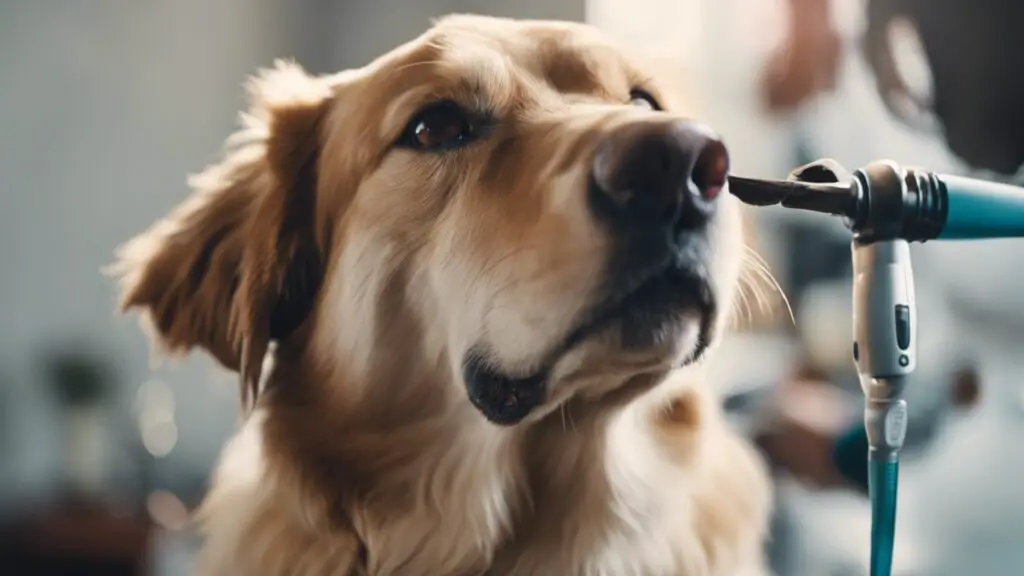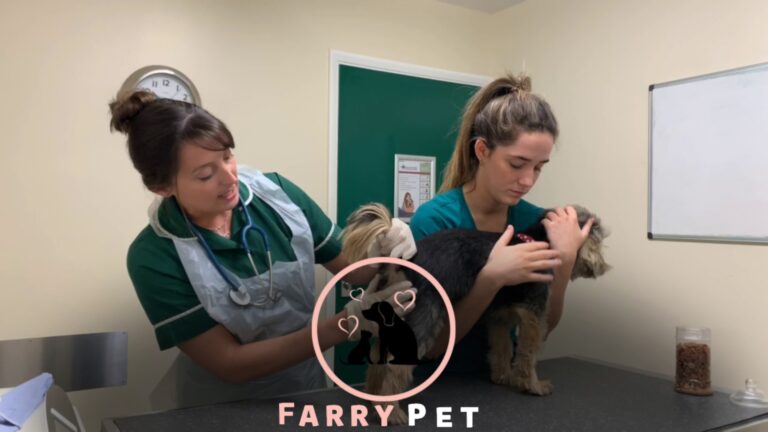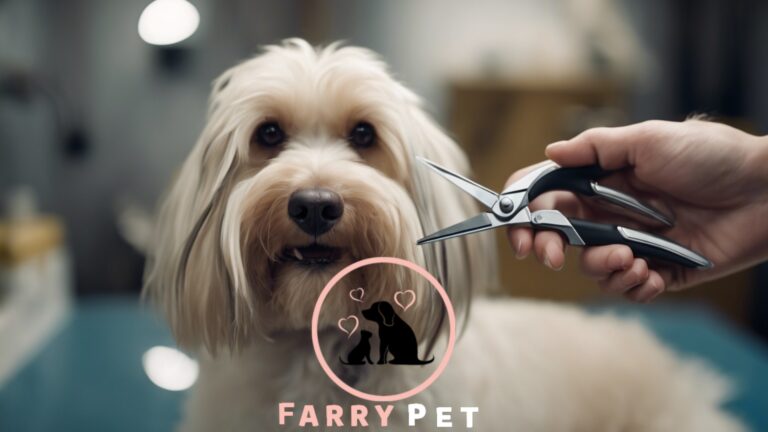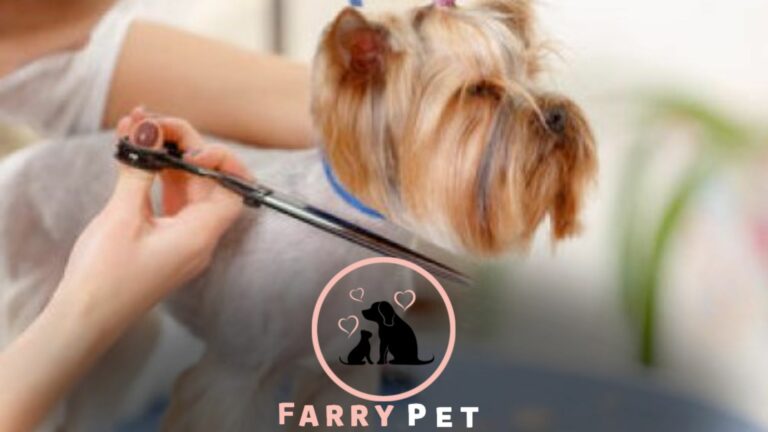
To restrain a dog while grooming, use a grooming table and arm with a secure leash attachment. Use treats and positive reinforcement to keep the dog calm and cooperative throughout the grooming process.
Grooming can be a stressful experience for dogs, so it is important to ensure their safety and comfort while restraining them. Grooming is an essential part of maintaining a dog’s hygiene and appearance.
However, many dogs can become anxious or fearful during grooming, making it difficult for owners to groom them effectively.
This is where proper restraint techniques come into play. By using the right equipment and employing positive reinforcement, dog owners can make grooming a more pleasant experience for their furry friends.
We will explore different ways to restrain a dog during grooming and provide tips to ensure their safety and comfort.
How to Restrain a Dog While Grooming?
Restraint plays a crucial role in dog grooming, ensuring the safety of both the groomer and the dog. Properly restraining the dog during grooming helps prevent accidents and injuries.
It allows the groomer to control the dog’s movements better, ensuring a smoother and safer grooming experience.
Additionally, restraint helps maintain the dog’s comfort by preventing sudden movements that may cause stress or anxiety. It allows the groomer to work efficiently, focusing on different grooming tasks without interruptions.
Restraint also helps prevent the dog from attempting to escape, minimizing the risk of accidental injuries.
By understanding the importance of restraint during grooming, we can ensure a positive and stress-free experience for both the groomer and the dog.
When grooming your furry friend, you may wonder, “How to restrain a dog to clip its nails?” We have some safe and effective ways to help you with this task.
Types of Restraints for Dog Grooming
When grooming your dog, it is essential to use proper restraints for their safety. Collars and leashes can help control their movements. Tables or benches can provide stable positioning.
Certain breeds may require specialized restraint tools. A grooming arm and loop can aid in holding them securely.
Muzzles are essential for dogs who may nip or bite during grooming. Ensuring the correct application of muzzles is crucial. These basic restraint techniques are essential for a successful and safe grooming session.
By using the right restraints, you can groom your dog effectively while minimizing the risk of injury or escape.
Keep your furry friend calm and comfortable throughout the process. With these techniques, your grooming sessions will be smoother and more enjoyable for you and your furry companion.
Tips for Safe and Effective Restraint
When grooming a dog, it is essential to restrain them safely and effectively. Assessing their temperament and behavior is crucial. Creating a calm and comfortable environment helps to gain and maintain their trust.
Positive reinforcement and rewards encourage cooperative behavior.
Gentle verbal communication and body language is important for a peaceful grooming experience. Recognizing signs of stress or discomfort allows for prompt intervention.
Positioning and securing the dog correctly for different grooming tasks is essential. Nail trimming, brushing and de-matting, bathing and drying, haircuts, and styling all require specific techniques.
Ensuring the safety of both the dog and the groomer is a top priority. Preventing bites and scratches, avoiding strain and injury, and managing uncooperative behavior are key.
Developing a routine for regular grooming sessions helps establish a familiar and comforting process.
If you’re facing resistance from your dog during nail trimming, you might ask yourself, “Why will a dog not let me cut nails?” We’ll explore the reasons behind this and provide solutions.
Troubleshooting and Common Challenges
Grooming dogs can be challenging, especially when dealing with aggressive or fearful behavior. Sensitivity is key, especially for dogs with medical conditions.
Building confidence and improving techniques are essential for successful grooming experiences. It’s important to avoid common mistakes during the grooming process.
Seeking professional help and training can be beneficial when handling difficult cases. By following these strategies, you can effectively restrain dogs while grooming.
If you’re passionate about dog grooming and want to turn it into a career, consider “How to get a dog grooming apprenticeship: exploring the path.” It’s a great way to build your skills in a structured environment.

Frequently Asked Questions
How Do You Restrain a Dog for Home Grooming?
To restrain a dog for home grooming, use a grooming table or non-slip mat to prevent slipping. Keep grooming sessions short and positive. Provide treats and praise to keep the dog calm and cooperative. Use a grooming harness or collar with a leash to secure the dog.
Start by brushing the dog’s coat to remove tangles and mats. Use nail clippers designed for dogs to trim the nails. Be gentle and avoid cutting the quick.
Use a dog-friendly shampoo and wash the dog thoroughly. Rinse well and dry using a towel or blow dryer on low heat.
Brush the dog’s teeth with a dog toothbrush and toothpaste. Clean the dog’s ears with an ear-cleaning solution and cotton balls. Finally, reward the dog with treats and praise for their good behavior.
How Do I Get My Dog to Hold Still While Grooming?
To get your dog to hold still during grooming, gradually introduce them to the process. Use positive reinforcement, such as treats or praise, to encourage good behavior.
Begin by gently touching and handling your dog’s fur, then slowly progress to brushing or combing.
Take breaks if your dog becomes stressed or anxious. Use a non-slip surface to keep them steady, and consider using a grooming table for better control. Distraction techniques, like offering a chew toy or calming music, can also help relax your dog.
Consider seeking professional help if your dog’s behavior continues to be problematic. Consistency, patience, and kindness are key to teaching your dog to hold still during grooming sessions.
How Do You Groom An Uncooperative Dog?
To groom an uncooperative dog:
- Start by introducing grooming gradually to let your dog get comfortable.
- Use positive reinforcement techniques like treats or praise to encourage cooperation.
- Break grooming sessions into shorter, manageable periods to avoid overwhelming your dog.
- Choose a calm, quiet environment to minimize distractions and anxiety.
- Use gentle and patient handling techniques, allowing your dog to adjust at their own pace.
- Consider using tools like desensitization exercises or a grooming table to make the process easier.
- Use appropriate grooming tools and techniques for your dog’s coat type.
- If needed, seek professional help or consider sedating your dog under a vet’s guidance.
- Maintain a consistent grooming routine to establish familiarity and lessen resistance over time.
- Always prioritize your dog’s safety and well-being throughout grooming.
How Do Groomers Secure Dogs?
Groomers secure dogs using various methods such as leashes, harnesses, and grooming loops. They ensure the dog’s safety and prevent sudden movements during grooming.
Grooming loops are commonly used to restrain dogs by attaching them to a sturdy and elevated object, ensuring the dog stays in place.
Leashes or harnesses are also used to restrict their movement and keep them under control. These tools allow groomers to work safely and efficiently, ensuring the dog and groomer are comfortable throughout the session.
By securely restraining the dog, groomers can focus on providing grooming services while keeping the dog at ease.
How Can I Safely Groom My Dog Without Them Getting Loose?
Use a sturdy grooming table with a secure harness to keep your dog restrained throughout the grooming process.






![How to Restrain a Dog to Clip Its Nails? [Step-by-Step Guide]](https://farrypet.com/wp-content/uploads/2023/08/How-to-Restrain-a-Dog-to-Clip-Its-Nails-A-Gentle-Approach-768x432.jpg)